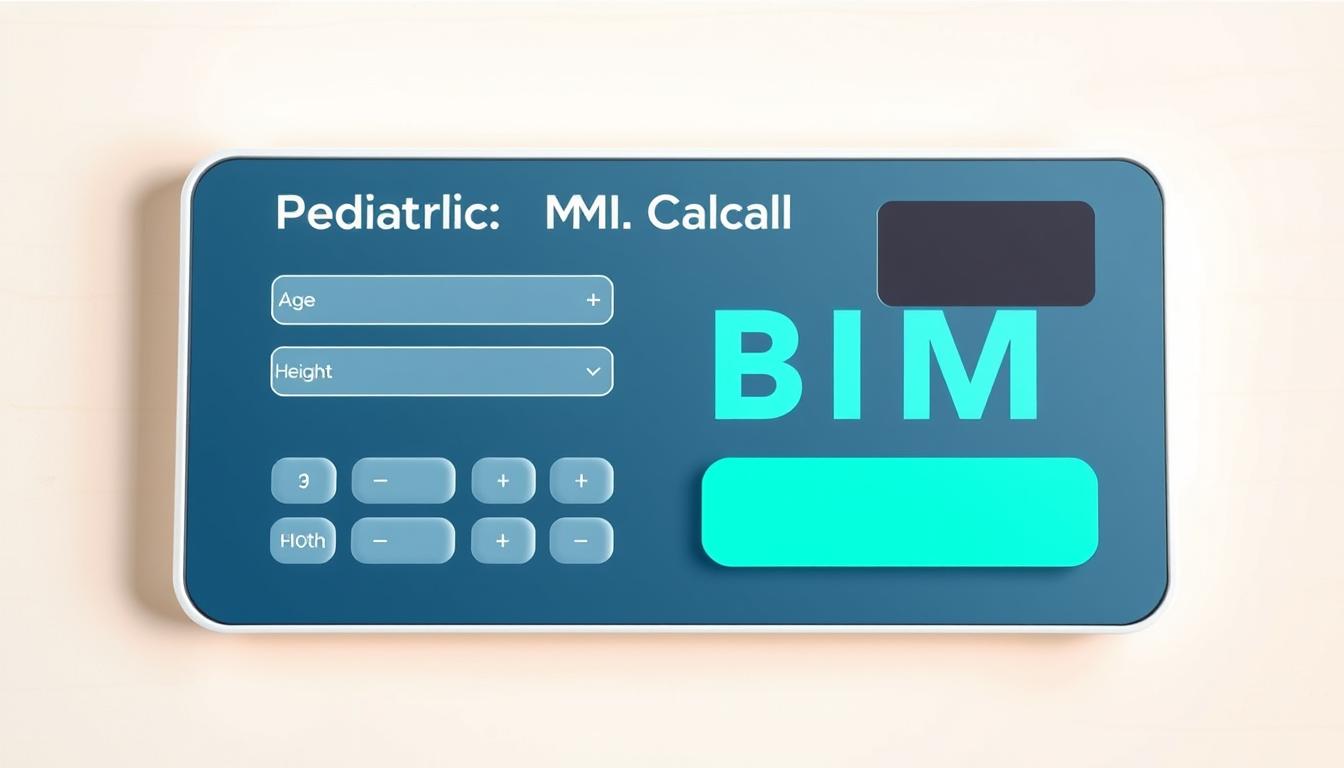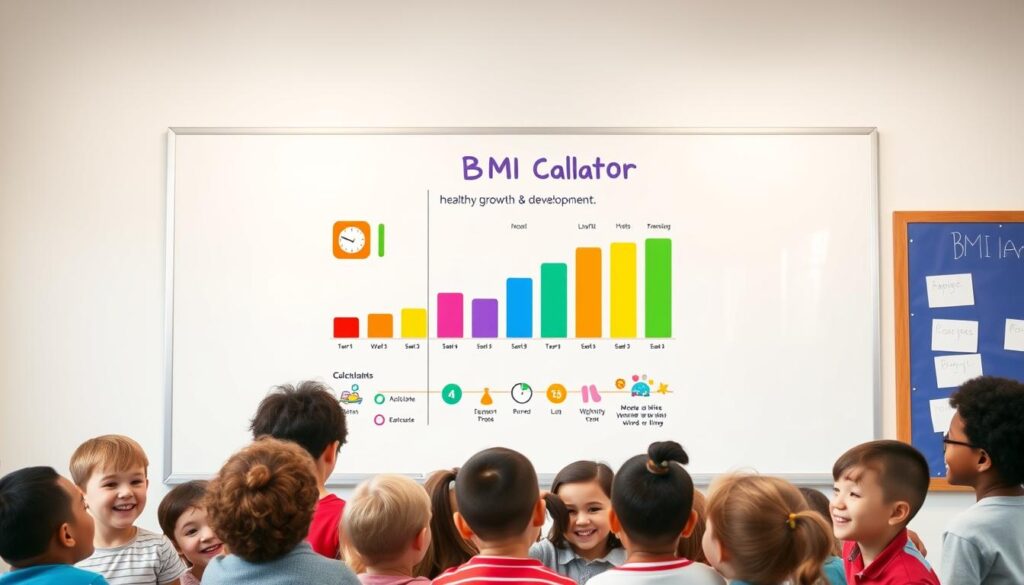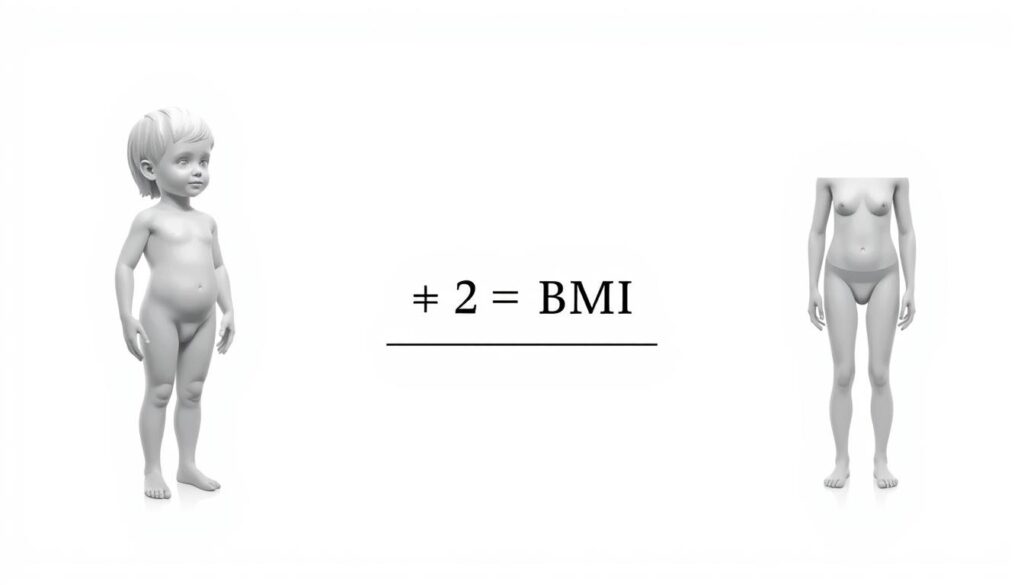As a parent, it’s natural to worry about your kid’s health and well-being, including their weight. It can be tough to know if your child is at a healthy weight. But, it’s key to their overall health.
The CDC says BMI shows weight compared to height. For kids, it uses sex-specific BMI-for-age percentiles. Our Child BMI calculator helps you understand your child’s weight status. It gives you important insights into their health.
Key Takeaways
- Understand the importance of monitoring your child’s weight.
- Learn how our pediatric BMI calculator works.
- Discover how to interpret BMI results for your kid.
- Find out why maintaining a healthy weight is crucial for your child’s overall health.
- Get insights into how our tool can support your child’s well-being.
What is a Child BMI Calculator?
A Child BMI Calculator is a key tool for parents. It helps check a child’s growth and health risks. It calculates the body mass index (BMI) based on height, weight, age, and gender.
Definition and Purpose
The Child BMI Calculator uses a child’s details to find their BMI. The CDC says BMI is key for checking growth. It helps spot health risks early.
With a kids BMI calculator, parents can see if their child is at a healthy weight. This is important for their health and well-being.
Importance in Pediatric Health
Watching a child’s BMI is crucial for their health. It can show early signs of weight-related health issues. Issues like diabetes and heart problems can arise.
The CDC’s BMI calculator for children is a trusted tool. Regular BMI checks help parents and doctors keep a child’s weight healthy.
Using a BMI calculator for children gives parents the power to support their child’s health. It’s a great tool for healthy growth and development.
How We Calculate BMI for Children
To figure out a child’s BMI, we use a special formula. It looks at their weight, height, age, and gender.
Understanding the Formula
The BMI formula is: BMI = weight (in kg) / height (in meters)². For kids, we adjust this to account for their age and gender. This helps us see how they’re growing and developing.
With our child body mass index calculator, parents can find their child’s BMI. They just need to enter their weight, height, age, and gender.
Age and Gender Considerations
Age and gender are key when calculating BMI for kids. They help us see if a child’s weight is healthy for their height and age.
For more info on measuring a child’s height and weight, check out the CDC’s guidelines.
| Age Group | Considerations | BMI Interpretation |
|---|---|---|
| 2-5 years | Growth patterns vary widely | Compared against growth charts |
| 6-12 years | Steady growth phase | Assessed for weight status |
| 13-18 years | Puberty affects growth | Monitored for healthy weight |
Why Monitoring BMI is Essential
Keeping an eye on a child’s BMI is key for their health and growth. It helps spot health risks early, so parents can act fast.
Physical Health Implications
Monitoring BMI is vital for physical health. Kids with high or low BMIs face health dangers. For example, a high BMI might mean obesity, which raises the risk of type 2 diabetes and heart disease.
Using a toddler BMI calculator helps parents see their child’s BMI. This way, they can prevent problems.
Abnormal BMIs can lead to serious health issues, including:
- Increased risk of developing type 2 diabetes
- Higher likelihood of heart disease and stroke
- Potential for certain types of cancer
- Respiratory problems, such as asthma
Emotional and Social Factors
A child’s BMI affects more than just their health. It can impact their mood and how they interact with others. Kids who are overweight or underweight might feel sad, lonely, and bullied.
These feelings can lead to mental health problems like anxiety and depression.
Some emotional and social impacts include:
- The potential for social isolation and bullying
- Increased risk of developing anxiety and depression
- Impact on self-esteem and body image
By watching BMI and tackling issues early, parents can help their kids develop good habits. This can help them feel better about themselves and avoid emotional and social problems.
Interpreting BMI Results for Children
Understanding BMI results for kids is key. It helps you see how your child’s health is doing. When you use a child BMI calculator, knowing what the results mean is important.
The Centers for Disease Control and Prevention (CDC) has BMI categories for kids. These are underweight, normal weight, overweight, and obese. It’s vital to know these to see if your child’s weight is healthy.
BMI Categories Explained
BMI categories for kids are based on percentiles. These categories show if a child’s weight is healthy for their age and height.
- Underweight: Less than the 5th percentile
- Normal weight: 5th percentile to less than the 85th percentile
- Overweight: 85th percentile to less than the 95th percentile
- Obese: 95th percentile or greater
Comparing Against Growth Charts
The CDC has growth charts for kids. These charts help compare a child’s BMI. By using these charts, you can see if your child’s weight is healthy.
These charts are made for both boys and girls at different ages. They consider how bodies change as kids grow.
How to Use Our Child BMI Calculator
Using our BMI calculator for kids is easy. You just need a few details. We need your child’s birth date, sex, height, and weight for the right calculation.
Step-by-Step Instructions
To use our BMI calculator for children, just follow these steps:
- Enter your child’s birth date for an age-specific calculation.
- Choose your child’s sex, as BMI percentiles vary between boys and girls.
- Put in your child’s height and weight in the correct units.
- Hit ‘Calculate’ to find out your child’s BMI percentile.
Helpful Tips for Accurate Measurement
For the most accurate results, make sure height and weight are precise. Take these measurements in the morning. This is when your child is usually at their tallest and hasn’t had any big weight changes yet.
By following these steps and tips, you can easily find out your child’s BMI. Our kids BMI calculator helps you keep an eye on their health. It also helps you make smart choices for their well-being.
Resources for Parents and Guardians
Parents and guardians can find many resources to help understand their child’s BMI and support healthy weight. It’s not just about calculating BMI. It’s about a whole approach that includes good food, exercise, and emotional support.
Recommended Health Guidelines
Many health organizations offer guidelines for a healthy weight in kids. The Centers for Disease Control and Prevention (CDC) and the American Academy of Pediatrics (AAP) are two key ones. They provide valuable info on child health and BMI.
The CDC has growth charts that doctors use to track a child’s growth. You can find these charts and BMI guidance on the CDC’s website.
Key Recommendations:
- Regularly check your child’s BMI to see how they’re growing.
- Encourage a diet full of fruits, veggies, and whole grains.
- Support at least 60 minutes of physical activity each day.
- Limit screen time and help them get enough sleep.
Support Groups and Educational Materials
There are also support groups and educational materials to help parents. Many organizations offer online resources, workshops, and community programs. These are designed to support families in promoting healthy lifestyles.
| Resource | Description | Access |
|---|---|---|
| CDC Growth Charts | Charts to track child’s growth and development | CDC Website |
| AAP Healthy Habits | Guidance on promoting healthy eating and physical activity | AAP Website |
| Local Support Groups | Community-based groups for sharing experiences and advice | Community Centers or Online |
Using a child body mass index calculator or a BMI calculator for kids is a good start. Combine this with health guidelines from trusted organizations. This way, you can help your child develop lasting healthy habits.
Conclusion: Promoting Healthy Growth
Raising awareness about BMI is key to a child’s health. It helps prevent many health problems. By managing weight for kids, we can ensure they grow up healthy.
Using our pediatric or toddler BMI calculator is important. It helps spot health risks early. This way, we can act fast to support healthy growth.
Healthy Habits for a Brighter Future
Parents should teach kids healthy habits. This includes eating well and staying active. These habits help kids grow strong and healthy.
Being proactive about our kids’ health is crucial. Our Child BMI Calculator is a great tool. It gives us insights to support our children’s health and growth.




